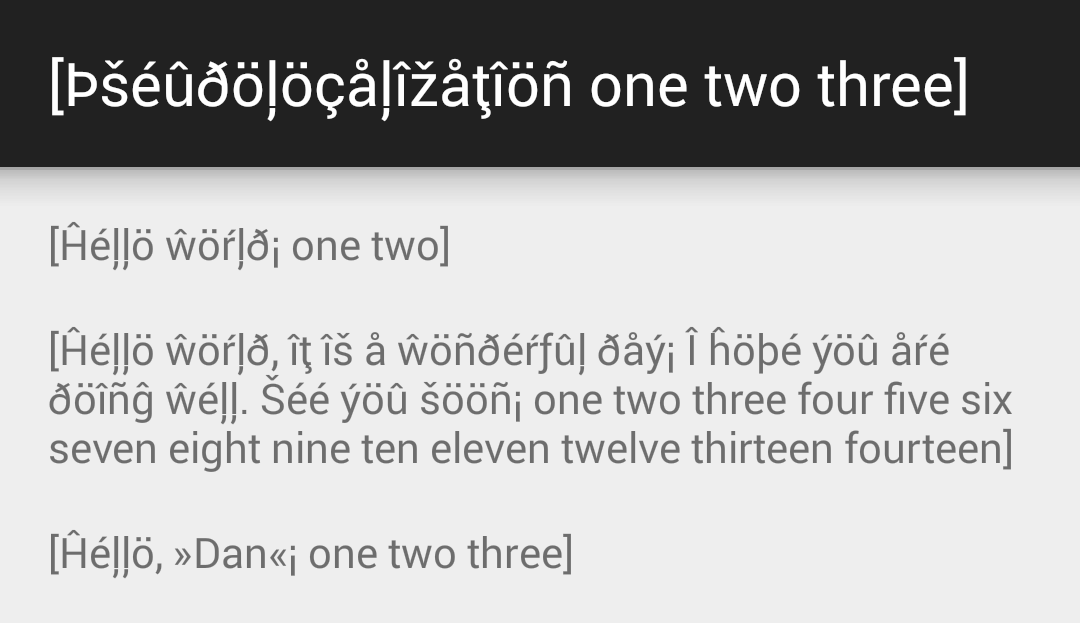Pseudolocalization: Visiting Android's Bizarro World

I wrote a while ago about pseudolocalization on Android but times have changed and I wanted to give an update.
Pseudolocalization is a developer testing method that automatically translates your strings files into gibberish, with extra text and accents, in order to test the robustness of your system. Here's a screenshot from a sample app:

The Wikipedia article gives a great overview on the issues it can reveal:
- Translated text that is significantly longer than the source language, and does not fit within the UI constraints, or which causes text breaks at awkward positions.
- Font glyphs that are significantly larger than, or possess diacritic marks not found in, the source language, and which may be cut off vertically.
- Languages for which the reading order is not left-to-right, which is especially problematic for user input.
- Application code that assumes all characters fit into a limited character set, such as ASCII or ANSI, which can produce actual logic bugs if left uncaught.
- The localization process may uncover places where an element should be localizable, but is hard coded in a source language. Similarly, there may be elements that were designed to be localized, but should not be (e.g. the element names in an XML or HTML document.)
Alright, you're sold: how do we do it?
First, enable it in your build type. Simply set pseudoLocalesEnabled in your build.gradle. Here's an example of enabling it for debug builds:
android {
// ...Clipped rest of normal config...
buildTypes {
debug {
pseudoLocalesEnabled true
}
}
}
Next, you need to set your phone to use one of the pseudolocales. There are two that are generated:
- en_XA, which adds tons of glyphs as well as inflates the length of each string.
- ar_XB, which reverses every string and sets the locale to right-to-left.
On some devices these locales are accessible in the normal language picker. If they're not, you'll have to manually set the new locale yourself. Here's a couple ways to do that:
-
You can install a locale switching app (like MoreLocale 2).
-
If you're using Genymotion, you can use the system app Custom Locale.
Now you can enjoy your app in Bizarro World!
"Bizarro box" by sharkhats is licensed under CC BY-NC 2.0
